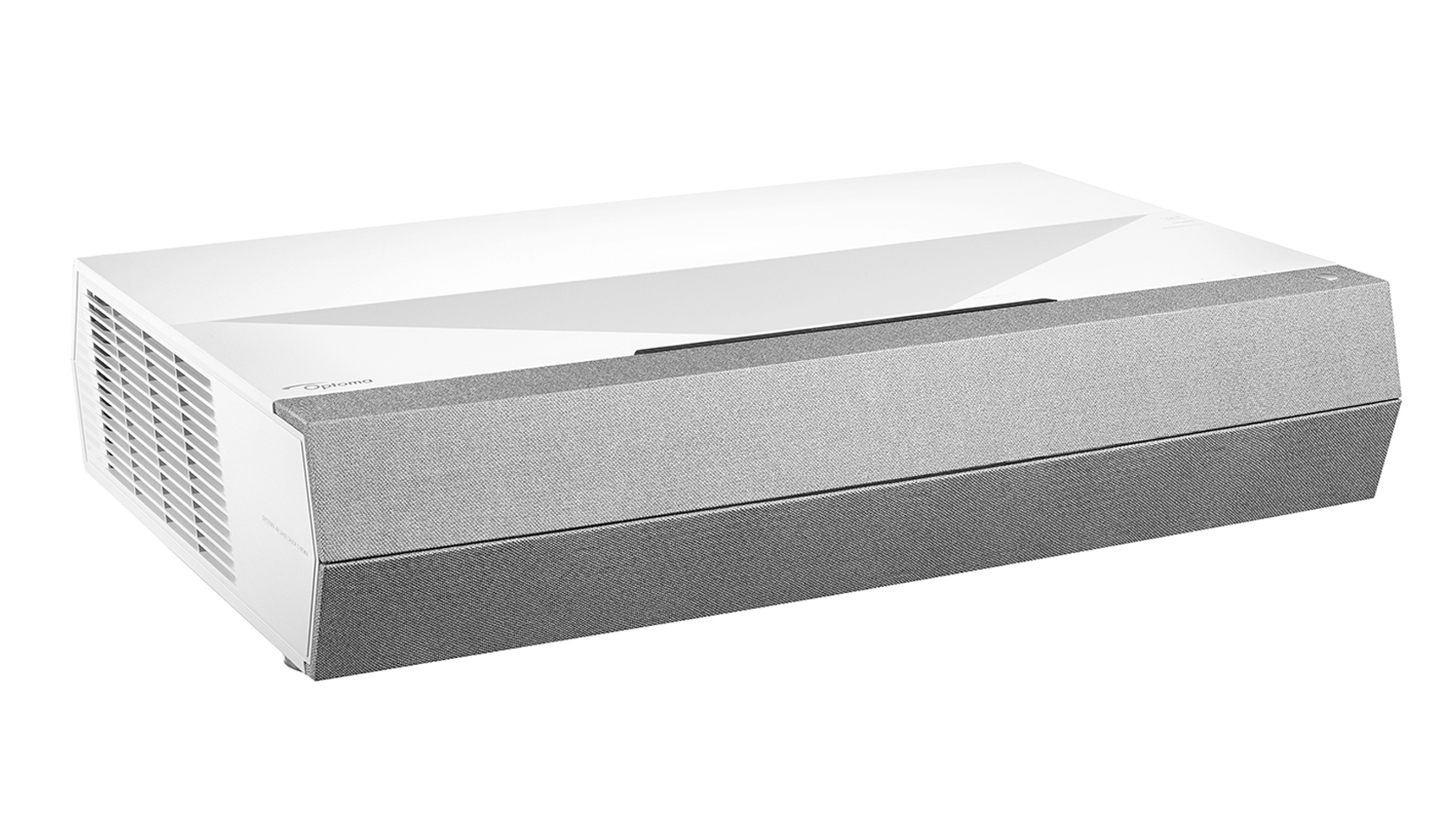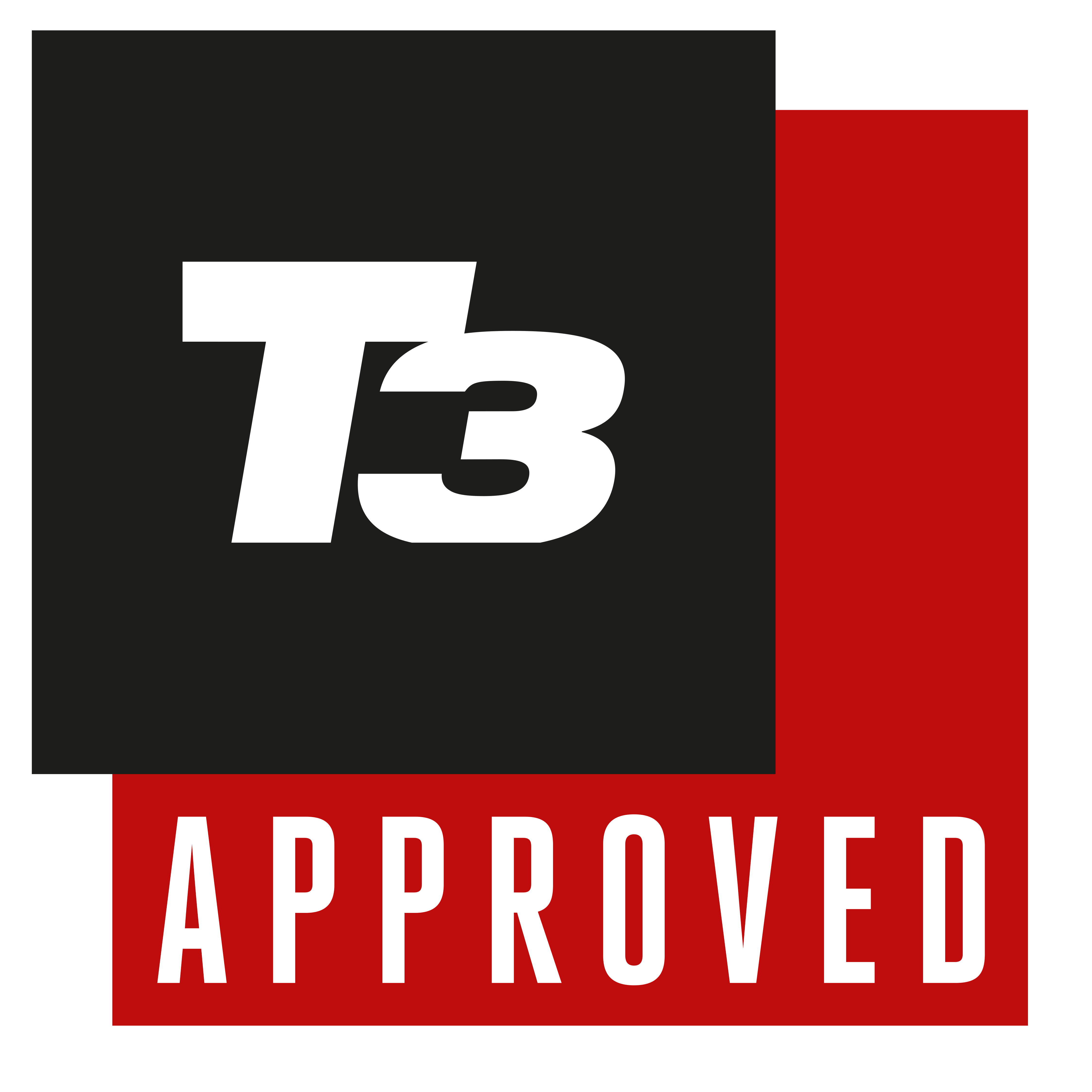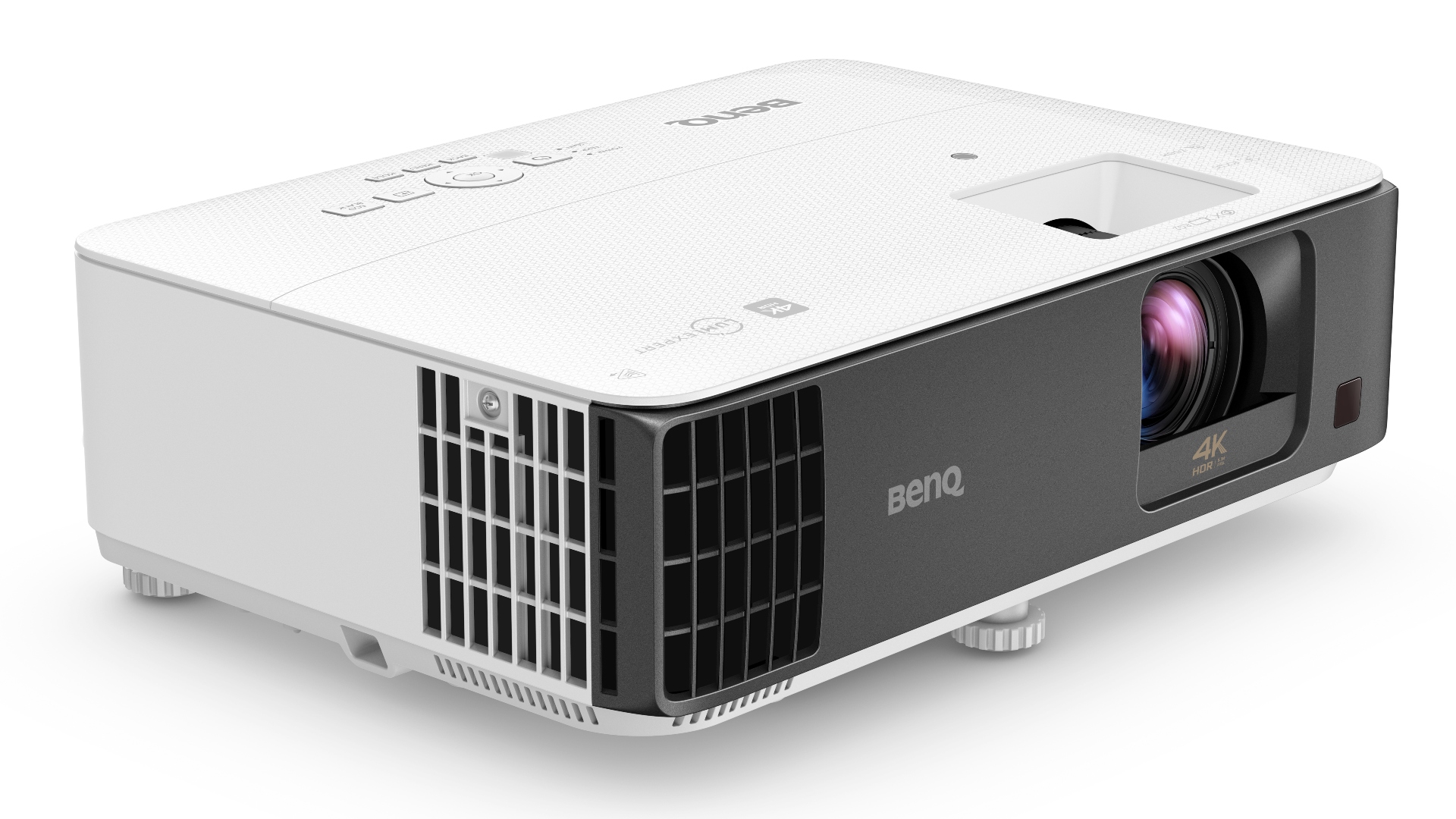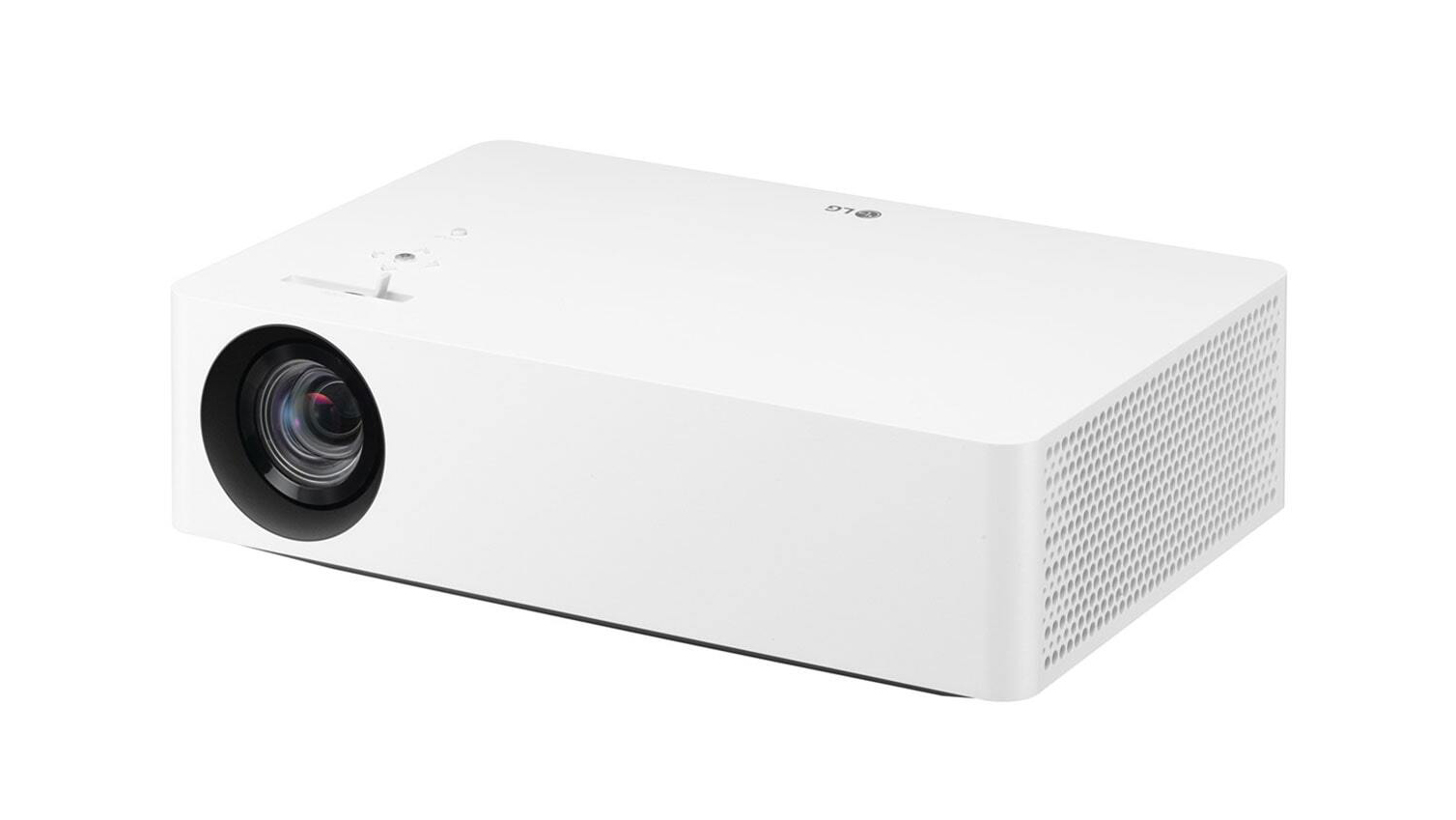Best projector 2026, including 4K and HDR models for film or sport
When it comes to sport and movie viewing it's time to go large and go home, with the best 4K and 1080p projectors

The best projectors make your home viewing time extra special – you can watch all your old favourites and the newest releases on the big screen in the comfort of your own living room. Projectors have come a long way over the years, particularly price-wise. It’s no longer going to cost you a fortune to invest in a projector, making that home entertainment experience much more accessible – you might never go to the cinema again!
Plus, while larger TV screens are being created very quickly, projectors are now the go-to budget-friendly option. So if none of the best TVs take your fancy, a projector could be the way to go. If you’re not sure what you should go for, our TV vs projector guide breaks down the features, benefits and downsides of each to help you decide.
So check out our round-up below for the most current options on the market.
The best projectors in 2026
The best 4K projector


1. Optoma CinemaX P2
Specifications
Reasons to buy
Reasons to avoid
This second-gen ultra-short throw projector embraces the same easy to live with design as its predecessor, the Cinema X, aka the UHZ65UST, but trims back the spec to hit a cheaper price point.
Contrast is now 2,000,000:1 (down from 2,500,000:1), brightness dimmed from 3.500 lumens to 3,000, and the colour gamut reduced. On the plus side, the price is now much more affordable, and the model still delivers a fantastic viewing experience overall.
Image quality is superb. The CinemaX P2 is built around a single chip 4K DLP device and laser light engine. It’s HDR compatible, but there is a caveat. While HDR is recognised from Blu-ray and streaming media players, the Optoma’s HLG support is strangely limited to file playback via USB, so broadcast HDR from set-top boxes may not recognise it as an HDR-capable device.
You can get a picture upwards of 120-inches with the projector placed around a metre from the wall. Operating noise is relatively low and easily disguised by the sound system.
The chassis is exactly the same as its predecessor. We get three HDMI inputs and a really impressive built-in 40W sound system. When it comes to big screen convenience, this has it in spades – as our full Optoma CinemaX P2 review explains.
The best affordable projector


2. BenQ TK850
Specifications
Reasons to buy
Reasons to avoid
BenQ’s affordable 4K offering is a brilliant buy if you want big screen sports, but don’t particularly want to dim all the lights when the big match is about to start. Motion smoothing is highly effective, so onscreen action looks wonderfully naturalistic. Interpolation comes via MEMC (motion estimation motion compensation) technology, which is able to retain detail in fast action.
The design is smart, with rounded sides and stylish grey blue face plate. Rear connectivity includes two HDMI v2.0 inputs, USB reader and a USB power port, should you want to insert a streaming TV stick. There’s also an optical audio digital output and 3.5 analogue stereo jack, if the onboard 10W sound system doesn’t hit the mark.
The projector is HDR compatible, but there is a caveat. When it receives an HDR source, be it from Blu-ray or media player, it goes into full brightness HDR mode, with an increase in noise to match, hitting upwards of 30dB. Watch in HD SDR and fan noise drops to 28dB. A good external sound system should still be able to cover this totally, though.
While great for sports and TV, this is less of a cinematic star. Black level performance is limited, tending toward dark grey. The TK850 uses a 0.47-inch DLP chipset, and the colour wheel is a four segment (RGBW) design. We didn’t spot any obvious colour fringing (a common trait of the tech), though. This single-chip DLP may not support Wide Colour Gamut sources, but it's still vibrant.
While the BenQ TK850 wouldn’t be our first choice for a home cinema room, it comes into its own with sports, thanks to a high average picture brightness and effective motion smoothing.
The best 4K projector for gaming


3. BenQ TK700STi
Specifications
Reasons to buy
Reasons to avoid
This 4K projector is smartly geared up for gaming, with an impressively low input lag rate (16ms at 4K 60fps) and three different image presets for different game genres, making it easy to optimise it however you like.
But movies and TV aren't an afterthought here – you actually get Google TV on-board (sort of – it comes with a streaming stick you connect, but that stays hidden) – and there are image modes for movies and sports, with the latter adding pleasing extra saturation to grass and kits.
It's a short-throw projector capable of creating 100 inches of screen from just 2m away, making it very easy to accommodate. It's a bit noisy in operation, and only has a 5W sound system on board, and while the latter can certainly make itself heard, we'd recommend adding some extra speakers.
It supports HDR10 and HLG formats for HDR, though we'd say it actually performs better with SDR – in HDR mode, it doesn't perform quite as well in brighter rooms. Though perhaps that's no problem in your gaming den…
The best portable projector


4. Viewsonic M2 Mobile Studio
Specifications
Reasons to buy
Reasons to avoid
This compact, short-throw 1080p projector is the perfect option for big-screen fun and games. It uses an LED light source, which requires next to no warm up, runs cool and is maintenance free (lamp life is quoted at 30,000 hours).
It looks great too, with a metallic bronze wrap and offset lens, with an adjustable stand helps cast the image up from a low angle. It’ll project an 80-inch picture from just over 2m. Connections include a single HDMI v2.0, micro SD card and USB reader, plus 3.5mm audio output and Bluetooth pairing button, so you can partner your own wireless headphones.
The M2 is Wi-Fi enabled, via a USB dongle, supplied in the box. You’ll need to pop this into a compartment on the underside of the projector. The M2 is built on the Aptoide Android-based smart platform, but this only offers limited app support.
Images are sharp and detailed. Colour performance is similarly outstanding, with hues vibrant and deep. Black-level performance isn’t so convincing, but that shouldn’t come as a surprise at this price point.
Operating noise is low, between 24dB and 26dB, and easily masked by the on-board sound system, which is surprisingly loud. Designed by Harman Kardon, it does the job for impromptu screenings and game sessions. Proof that you don’t need to spend big for a stylish projection offering, the M2 is a fine multimedia short throw offering, smart enough to live on shelving and small enough to be stowed away when not needed.
The best compact 4K projector


5. LG HU70LS Cinebeam
Specifications
Reasons to buy
Reasons to avoid
LG’s lightweight Cinebeam 4K projector is an elegantly designed projector with a higher than average IQ, courtesy of LG’s webOS smart platform.
Connections comprise two HDMI v2.0 inputs, plus twin USB ports, a digital audio optical output and headphone jack. Ethernet is available, an alternative to on-board Wi-Fi and Bluetooth.
The model will suit most living rooms and dens. To cast a 100-inch image, you’ll need around three metres from lens to screen. Brightness is rated at 1,500 ANSI lumens, and there’s compatibility with HDR.
When it comes to motion handling, LG’s TruMotion interpolation does a suitably smooth job. It’s. It’s useful for sports, but for movies we’d recommend turning it off. Operating noise is relatively high at around 30dB. Ease of use is class leading, though. The remote control is an all-white version of the Magic Remote, familiar from LG’s smart TVs. It comes with dedicated buttons for Netflix and Amazon Prime Video.
The HU70LS uses a 4K DLP XPR chip, which offers a reassuringly smooth, filmic image. There’s no conventional lamp on-board. Instead the HU70LS uses an LED light engine. This has the benefit of instant on and off. The HU70LS is bright enough to be used in rooms with even quite high levels of ambient light, and colour performance has plenty of wow, claiming 92% of the DCI-P3 colour space.
Because it’s LED, there’s no need for a colour wheel, so no DLP rainbow effect, and with a working life of 30,000 hours, this projector should see you through umpteen box set binges. The HU70LS is a classy reimaging of the home cinema projector. We love its contemporary design and zero-maintenance LED light engine.
The best mid-range home projector


6. Epson EH-TW9400
Specifications
Reasons to buy
Reasons to avoid
The EH-TW9400 is a 4K projector that uses Epson’s Pro UHD pixel shifting technology, first seen on the EH-TW7300. It’s also available bundled with a wireless HDMI transmitter, as the EH-TW9400W. Consider it a serious contender for the home theatre enthusiasts.
While not native 4K, the pixel density its projected UHD picture offers is sublimely filmic, and looks great with both 4K and HD sources. Connections include two HDMI inputs, USB and VGA PC. There’s no token sound system (a sure sign this projector is intended for home cinema use).
Light output is rated at 2,600 lumens, which is just about bright enough for the EH-TW9400 to be used in rooms with a level of ambient light. For movies, though, plan on full blackout conditions – this is what it's designed for, after all. You’ll need a projection distance of at least 3m to fill a 100-inch screen.
Colour fidelity is outstanding. The projector can cover the full DCI-P3 colour spectrum using the Digital Cinema preset. Black level performance is above average too, with HDR mode enhancing subjective contrast. It’s relatively quiet too, purring along at 24dB.
If you’re looking for a truly impressive home cinema projector that doesn’t come with a stratospheric price tag, this is well worth shortlisting.
How to buy the best projector for you
The TV market may have almost entirely emigrated to 4K, but home projection has been slower to follow, though now there are great options.
There are a variety of technologies that can deliver a projected 3840x2160-pixel image. Sony dominates the native 4K space with its SXRD models. These are uniformly large and, shall we say, a touch on the pricey side – but they do look fabulous.
Most cost effective are models that use single chip DLP and 3LCD technologies, which essentially pixel-juggle to deliver a 4K image. The most popular is Texas Instruments DLP UHD solution. While a DLP DMD (Digital Micromirror Device) itself only has 4.15 million mirrors, insanely fast switching coupled with image processing enables it to project an 8 million pixel image. The technique is called XPR (eXpanded Pixel Resolution).
Some enthusiasts argue that as a result XPR projectors aren’t really UHD at all. But the tech gets two thumbs up from us. The image is demonstrably more detailed than that from regular HD projectors. If there is a catch, it’s that the technology doesn’t support a wide colour gamut. It works within a conventional colour space, often referred to as REC.709. But that’s a small, almost imperceptible price to pay considering their value for money.
There’s also been a revolution in illumination technology. While many projectors still use conventional lamps to cast their images, laser light engines and LED are increasingly finding favour. Both tend to run cooler and effectively last for the lifetime of a product, so you won’t be buying a new bulb every couple of years.
Get all the latest news, reviews, deals and buying guides on gorgeous tech, home and active products from the T3 experts
For over 25 years, Steve has been casting his keen eyes and ears over the best that the world of TV and audio has to offer. He was the creator of Home Cinema Choice magazine, and contributes to huge range of technology, home and music titles along with T3, including TechRadar, Louder, Ideal Home, the i newspaper, and more.


